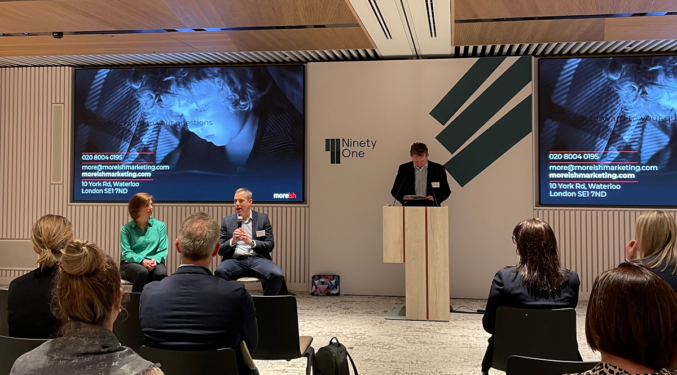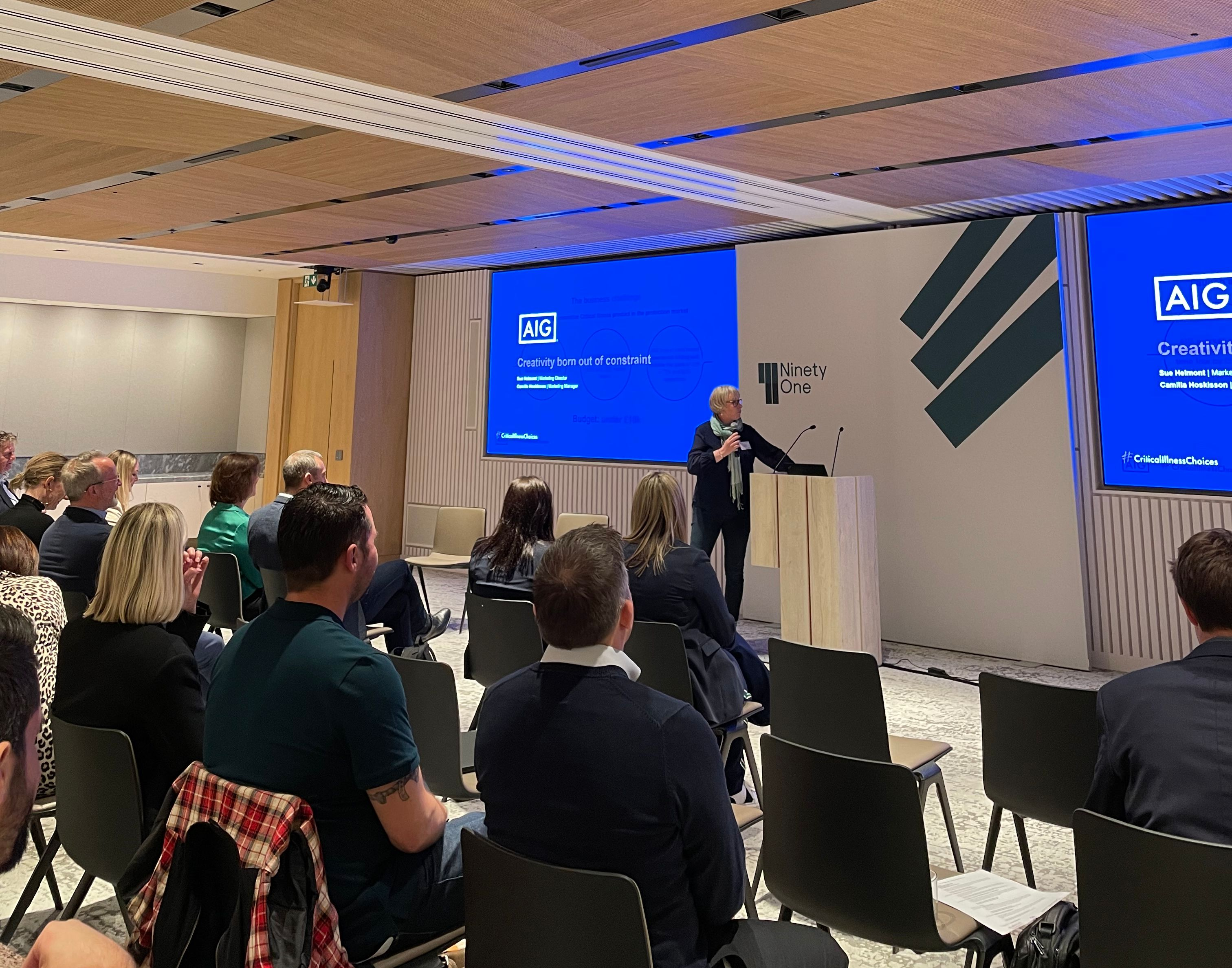Winners of key Marketing Effectiveness awards gathered this week to share insights from their successful entries. Read the stories below:
Best Integrated Campaign: Skipton Building Society
Despite being the fourth largest building society in the UK with over a million members, Skipton Building Society had done little investment in brand prior to 2016.
Post financial crash and being a member owned mutual every penny Skipton spends is highly considered. Hoping to get buy in from the Skipton’s board, primarily accountants, Marketing Director Lynne Cook wrote a paper that year making a case for the importance of brand, that it is not an ethereal or discretionary objective, that is supports any growing ambitious business and that building it is a long-term project.
Starting with research, Skipton Building Society found that despite popularity with existing members, there were negative perceptions of the brand and the sector that they needed to overcome and address. Also Skipton was not seen as a national brand and people were not clear what they did.
The research found that the term “members” can sound exclusive rather than inclusive, but some of the core attributes of the brand were exciting but not well understood.
Skipton decided to get back to basics and start by telling people who it was and what it did.
The company realised that introducing a fluent device (a brand character or icon that can be modified to fit into multiple channels) could have a positive effect. It decided to use its castle logo, which embodies concepts of stability and heritage, and the campaign creative narrative “a good place for your money”.
TV was the number one channel to get the message out, offering low risk, great benefits and longer memory effect, broadcast sponsorship was effectively used to do a national reach job of the who and what in 2019. The pandemic hitting in 2020 meant that Skipton’s brand purpose could resonate more, with materials evoking the lockdown in 2020, followed by sponsoring Channel 5’s ‘The Great Outdoors’ in 2021.
To ensure all activity is driving forward the business Skipton conducts regular and robust brand measurement, including annually, quarterly and monthly activity. All metrics are making significant progress, including spontaneous awareness, intrinsic brand perceptions and consideration. This translates into significant new brand-driven savings accounts.
As the brand has evolved, the company has moved from factual details such as the who and the what to focusing on “why”. Since September 2021, this has moved to “helping you find your good place,” with campaigns highlighting how creating wealth has helped customers support their children as well as their own lives.
Most Effective Use of a Limited Budget
WINNER: AIG Life: ‘Critical Illness Choices’
Insurer AIG wanted to disrupt the critical illness market, reducing complexity while making successful claims more likely. AIG’s market share had fallen to an all-time low in Q3 2020, competing with market leaders L&G and Aviva.
It decided to launch an innovative critical illness product in the protection market, with the goal of differentiating while maintaining a principled approach to better customer outcomes.
The proposed strategy was to reduce complexity while making successful claims more likely – the company needed to clearly articulate its innovation to ensure no loss of business and minimise adviser resistance. AIG also had to be
positioned as an innovative player in the critical illness market.
With limited budget, the approach was to focus on earned and owned, leverage existing relationships, showcase in-house expertise and make selective investments.
There were three key types of content: webinars, a policy guide and an animation. Webinars became the hero channel, used to share real customer stories. The father of a boy born with a severe disability joined the first webinar and was able to articulate what a difference the cover had made to their lives.
The short animation condensed much of the information about the policy, allowing advisers to easily share its benefits.
The market reaction was positive, reaching 256,000 readers across four publications and five articles. This included positive articles about the policy overhaul and positive tweets. Results across brand perception and NPS were all positive.
Overall, AIG was lauded for taking a brave step which created a step change in the critical illness market.
Most Effective Business to Business Campaign
WINNER: Moreish Marketing: ‘Defaqto Engage: Financial Planning with No Loose Ends’
Defaqto is a financial information company, known for its star ratings based on the comprehensiveness of a financial product. It also has a product called Defaqto Engage which helps advisers make better product recommendations, which works as both a help platform for advisers and a distribution channel for asset managers.
Defaqto wanted to increase new adviser users and fund recommendations through a campaign designed to connect its USPs with the needs of advisers.
 Crucial to this was finding the right agency, which in this case was Moreish Marketing.
Crucial to this was finding the right agency, which in this case was Moreish Marketing.
Moreish’s process for building the campaign divided into three key parts, starting with an induction process involving workshops and interviews with marketing, sales and other teams. This was followed by a review of existing marketing strategy and creative as well as competitor reports and sales and marketing metrics.
Finally, Moreish conducted qualitative and quantitative research, which discovered the biggest challenge for advisers was the time spent in administration support, as well as the fact that they were all using several different types of software.
It was also clear that the numerous benefits of the solution needed to condensed into a simple value proposition, which would allow simple creative to be built. This was “helping advisers deliver expert financial planning with no loose ends”, using the metaphor of threads of yarn which needed to be untangled.
KPIs focused on website traffic, lead generation, conversion and sales revenue, and usage and recommendations.
6,347 new visitors to the website vs. target of 2,000
Bounce rate reduced by 52%
47% increase in leads generated
32% increase in leads converted
8% overall lift in Engage sales revenue
Engage logins increased by 32%
48% uplift in fund recommendations
Most Effective Digital Marketing Campaign
WINNER: Janus Henderson ‘Janus Henderson Investment Trusts’
Creative agency Hub says its mission is to stop the endless creation of content that is never seen, creating content frameworks that are in line with clients’ strategic objectives and relevant to their target audiences.
Client Janus Henderson approached Hub to refresh its content offering and appeal to a younger and more digitally savvy audience.
After extensive meetings between the Hub and client team to discuss the objectives, Hub conducted a detailed audit of competitor websites and a qualitative analysis of content to identify the optimal digital strategy. Based on this, they developed a detailed content plan across key areas, including the type of content and how it would be distributed.
Content was divided into the “three Hs” – “hero” content for building brand awareness, “help” content for people doing research and “hub” content for people who have signed up and are seeking regular content.
This was followed by a project to cleanse and enhance data from the CRM, using this to develop customer journeys.
Site visits: +63%
Ave session duration: +9.7%
Total engagement time: +140%
Unique page views: +58%
Bounce rate: -10.8%
Conversion rate: +176%
Judges’ Special Award for Consumer Insight
WINNER: Prudential (with Teamspirit) ‘Winning the Generation Game’
Prudential’s brief to agency Teamspirit was to position Prudential as the go-to provider for intergenerational planning (IGP) and products. Its target audiences were supporter advisers, non-support advisers, media and key influencers, and internal stakeholders.
The context was the huge relevance of intergenerational planning is highly relevant considering £5.5 trillion will change hands between now and 2055. However, 67% of adults who expected to inherit £250,000 or more did not have a financial adviser.
While Prudential was ahead of competitors due to the breadth and depth of financial planning content and technical support, it faced limited awareness among advisers that it offered IGP rather than constituent products, and the offering was hidden within the site.
The client and agency created thought leadership content built around extensive research about the market. The surveys unearthed some key stats about the current IGP market, including that 62% of people felt positively about sharing their adviser with their children.
The strategy included content from the campaign being featured in the likes of FT Adviser, trade advertising, and building new online tools to engage people with IGP advice. The outreach achieved about 60 pieces of coverage, including consumer finance publications and core target adviser press titles.
1 in 15 of all UK advisers downloaded the intergenerational planning thought-leadership report
Increased adviser awareness of Prudential as a ‘player in IGP’
£674m in bond sales, one of the core IGP products


